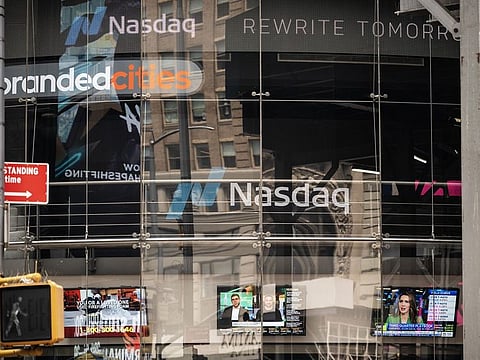Is a US stock market crash inevitable?
A recession has not turned up, but that does not mean investors should drop their guard

Did I just catch your attention?
Let me share two reasons why I chose this headline. First, it is true that the stock market will turn down one day, we just don’t know when.
Will it be this year, next year or in 2026? Nobody knows. When I started my career, I was told the ‘best’ economists were the ones that gave a forecast or a time horizon, but never both.
The second reason is that we are all affected by negativity bias. You are more likely to read this article with an alarming headline than if I were to use something less alarming or, God forbid, even positive. We all give additional weight to negative news and views.
Even I, despite having analysed financial markets for almost 30 years and arguably understanding the trade-offs, am afflicted by the same bias. I am always looking for what could potentially go wrong and lead to a sharp sell-off.
As with anything, self-awareness is only the first step. I am aware I am afflicted by negative bias, and I consciously try to counteract it.
The way I do that is twofold. First, I remind myself of the probabilistic outcomes: equities rise approximately in twice as many years as they decline.
Second, I remind myself of how difficult it is to actually predict when weakness will occur. Very few people, including investment professionals, have a good track record of timing such drawdowns in a profitable way. They either sell too early and buy back too late, or vice versa.
What are markets signalling?
I constantly keep this backdrop in mind as I look at markets today. A bearish narrative is very easy to write. US stocks have very high valuations. Meanwhile, the US market was driven higher in 2023 largely on the back of seven stocks, the so-called ‘Magnificent 7’.
Finally, we still have many indicators signalling there is a heightened risk of a US recession. Indeed, many of these indicators have a perfect track record. For instance, historically, every time certain parts of the yield curve have inverted – that is long term bond yields have fallen below short-term bond yields – a recession has ensued in the following two years.
An inversion of the 10-year vs. two-year yield curve in 2022 led virtually the whole financial market analyst community to forecast a recession and go underweight global equities last year, only for the market to rally on the back of the stellar gains in the 'Magnificent 7’. Of course, we are still waiting for that recession.
This leads us to today. The key question is: Has the recession been dodged or is it merely delayed? Will the leading indicators ultimately prove correct, just with a slightly longer lag, or is this time truly different?
With these lingering questions, the US April employment report makes interesting reading. It was a weak report across the board. Job creation and wage growth both decelerated while unemployment rate ticked higher.
For people with negativity bias, this is a sign that cracks are appearing in the labour market and the long-awaited recession is finally coming. Of course, this is possible, but not inevitable.
What should an investor do?
Your investment plan needs to factor in the reality that a stock market crash will happen at some point. The doomsayers will ultimately be right. Of course, the stock market might double while we are waiting for them to be right, which means it is important not to overreact to doomsayers.
Preparing for the inevitability of a stock market crash will mean different things to different people.
Some people will still be comfortable having 100 per cent of their funds invested in stocks as their investment time horizon is long enough and they have an uncommon ability to withstand a temporary portfolio decline of 40-50 per cent. If a stock market crash is delayed, they will likely outperform the more conservative investors.
If a crash does happen, they will likely underperform in the near term. However, they are likely to emerge as outperformers over the longer term if they hold on through the downturn.
Other more short-term-focused investors are likely to sell in the event of a market crash, probably just before the markets bottom, and fail to get back in and totally avoid equity investments, while the market goes onto its next multi-year bull market. Such investors are likely to underperform those who remained investors. Then, there are others who might try to smoothen portfolio returns by having a diversified portfolio.
Investing for the long term
The bottom-line is: Aligning this decision with your ability to withstand losses is far more important than trying to optimise returns given a specified risk tolerance. That said, we know that taking more risk is beneficial to long-term returns.
One nuanced approach might be to think about your investments in terms of pots of money. One pot might be relatively short-term in nature, and therefore the equity exposure of this portfolio should be low. Safe and sure returns are what you are seeking here.
However, if you are targeting a goal that is over 10 years away, then the current market valuation or any short-term fluctuations in economic data should be less important to you because history shows equities rise, comprehensively beating inflation, over a longer period. Thinking logically in this way may reduce the fears you have when it comes to investing for the longer-term goals and help you weather the financial storms.
If it does, success is more likely.
Sign up for the Daily Briefing
Get the latest news and updates straight to your inbox

